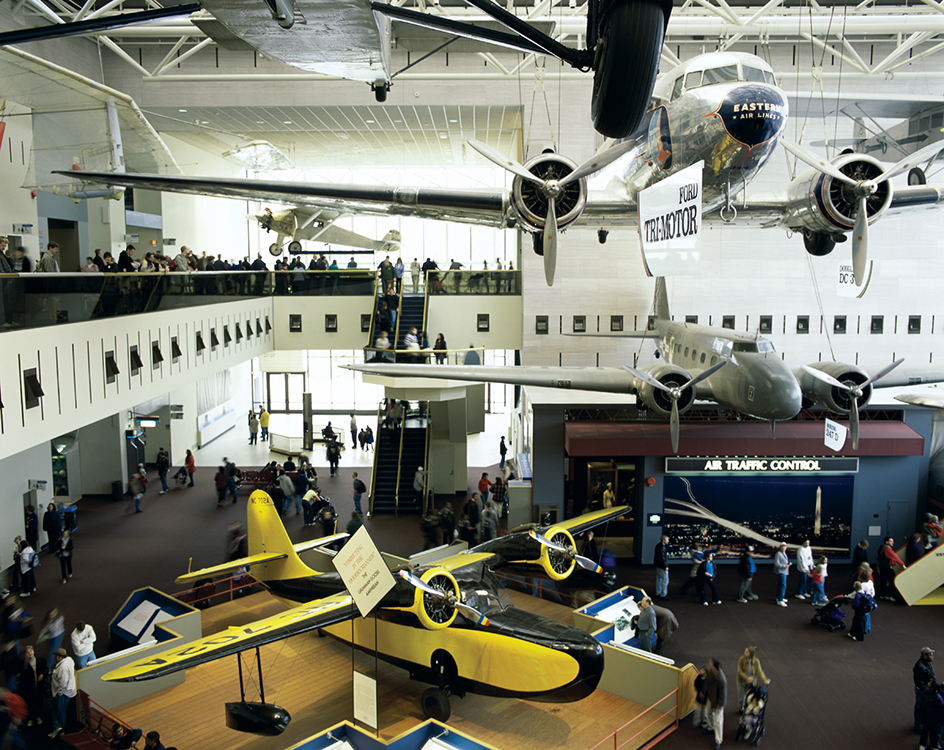Smithsonian Institution is a federally chartered nonprofit organization of scientific, educational, and cultural interests headquartered in Washington, D.C. James Smithson, a British scientist, left his fortune to the United States in 1829 to found an establishment for the “increase and diffusion of knowledge among men.” The United States Congress established the Smithsonian in 1846.
Administration.
A board of regents governs the institution. It consists of the chief justice and the vice president of the United States, three members each of the U.S. Senate and the House of Representatives, and nine private citizens appointed by joint resolution of Congress. The secretary of the institution acts as executive officer and directs its activities.
Museums.
The Smithsonian operates numerous museums. Many of these museums display artworks. Others feature exhibits on American history, natural history, aeronautics and space exploration, or science and technology.

The Smithsonian American Art Museum surveys American art from colonial times to today. The museum’s Renwick Gallery features American crafts and decorative arts from the 1800’s to the 2000’s. The National Portrait Gallery exhibits likenesses of people who have contributed significantly to U.S. history, development, and culture. The Freer Gallery of Art displays masterpieces of Near and Far Eastern art, early Christian manuscripts, and a collection of works by the American painter James McNeill Whistler. The Arthur M. Sackler Gallery houses Asian and Near Eastern art.
The Hirshhorn Museum and Sculpture Garden emphasizes modern painting and sculpture. The National Museum of African Art exhibits ancient and contemporary arts of Africa. The Cooper Hewitt, Smithsonian Design Museum in New York City maintains a huge collection of design objects. The Anacostia Community Museum is devoted to African American history and culture. The National Museum of the American Indian houses exhibits on ancient and modern Native American life.
The National Museum of Natural History has exhibits and conducts research on biology, human cultures, mineral sciences, and taxonomy (the scientific classification of living things). The National Museum of American History houses collections representing American cultural, civil, and military history, as well as scientific and technological advances. The National Air and Space Museum records aviation and space flight developments. The National Postal Museum displays the Smithsonian’s postage stamp collection and items of postal history. In 2016, the National Museum of African American History and Culture opened. This museum houses galleries and exhibits on slavery, segregation, the civil rights movement, and African American contributions to music, entertainment, sports, and politics.


Other facilities
operated by the Smithsonian include a zoo and centers for scientific research and cultural exchange. The zoo, called the National Zoological Park, has more than 2,000 mammals, birds, reptiles, and other animals.
The Smithsonian Astrophysical Observatory, in cooperation with the Harvard College Observatory, operates a research center in Cambridge, Massachusetts. The center, called the Harvard-Smithsonian Center for Astrophysics, conducts studies on the physical and chemical processes that occur in the universe. It runs an observatory near Tucson, Arizona. The Smithsonian Tropical Research Institute in Panama studies tropical ecology and seeks to understand biological diversity.
Affiliated institutions.
Three institutions affiliated with the Smithsonian have their own governing boards. They are the National Gallery of Art, the Woodrow Wilson International Center for Scholars, and the John F. Kennedy Center for the Performing Arts.
The National Gallery of Art maintains a collection of paintings, sculpture, and the graphic arts representative of the best in the artistic heritage of the United States and Europe. The Woodrow Wilson International Center for Scholars was established by Congress to be the nation’s official memorial to the 28th president. The center fosters closer ties between scholars and government leaders. Its fellowship program is devoted to supporting research on contemporary policy issues. The John F. Kennedy Center for the Performing Arts is a national cultural center and memorial to President John F. Kennedy. The Kennedy Center presents concerts, operas, plays, dance, lectures, and many other programs.
